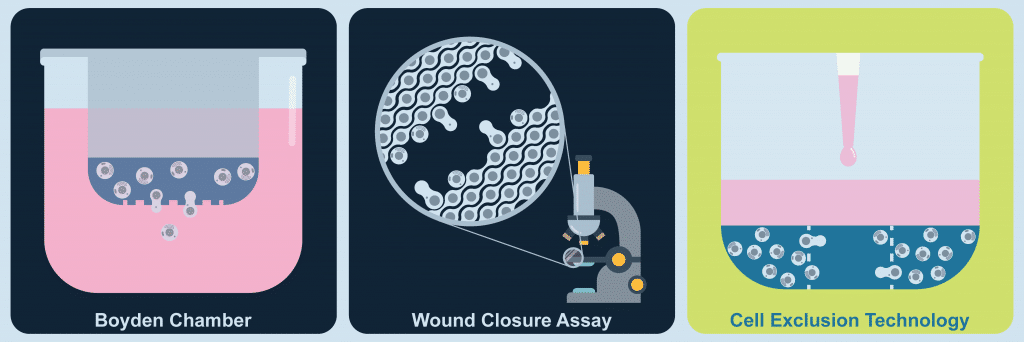What is a Cell Migration Assay?
Cellular migration refers to the movement of cells from one location to another, usually in response to some chemical or mechanical signal. It is fundamental to an extremely wide range of organic processes, from the developmental (i.e. embryogenesis) to ongoing biological maintenance (i.e. tissue repair). Using a cell migration assay, it is possible to measure the net migration and rate of migration for cellular populations in vitro and thus gain an understanding of various bioorganic mechanisms.
Platypus Technologies offers powerful a cell migration assay for studying various bioorganic processes. With high flexibility and real-time monitoring capabilities, our cell exclusion-zone migration assays meet the stringent requirements of expert users in various application areas, from academia to pharmaceuticals.
In this blog post, we will explore the basic principles of cell migration assays in more detail, with a focus on exclusion-zone technologies.

Cell Migration Assays: Basic Working Principles
Generic cell-based assays are used to analyze and quantify an array of cellular functions, such as cell signaling, proliferation, and so on. The appropriate assay is determined by the application and specific test objectives.
Studies into metastasis, for instance, typically use a Boyden Chamber to monitor the adhesion of invading cells to a semi-permeable membrane seeded with an extracellular matrix (ECM) protein mixture before detaching cells from the plate well with an appropriate buffer and calculating the total number of cells present. This configuration is useful for screening the efficacy of pharmacological compounds in cancer treatment and for studying the migration of tumor cells into healthy tissue via degradation of extracellular macromolecules.
The conventional Boyden Chamber – also known as the transwell assay – has its advantages and disadvantages. It is a well-established analytical method and is subsequently easy to implement at comparatively low costs. However, in vitro transwell models have poor physiological relevance and migration results can conflict with invasion data.
Cell exclusion migration is another leading technique used to quantify the rate of/net total cellular migration. It is conducted by creating a cell-free zone in a sample well and seeding the area around this circular area with sample cells. Depending on the method, a removable physical stopper or a soluble gel may be used to create the exclusion zone. Once the seed cells have adhered to the well, the physical stopper is removed/the gel dissolves to enable cell migration into the exclusion zone. High throughput screening tools are then used to observe the detection zones as cells from the periphery migrate inwards.
Cell Exclusion-Zone Migration Assays from Platypus Technologies
The exclusion-zone method is ideal for identifying cell migration inhibitors and promoters in cancer research, drug discovery, wound healing applications, and more. At Platypus Technologies, we have leveraged our expertise for the development of advanced exclusion-zone cell migration assays for the highest possible quality results. We also champion the acquisition of real-time data collection in terms of cell migration versus time, as opposd to the exclusive end-point analysis associated with transwell technology. Our high-performance cell migration assays are engineered to give you total confidence in your results.
If you would like more information or want to discuss partnership opportunities with us, simply contact a member of the Platypus Technologies team today.
Learn More about Oris Cell Migration Assays.